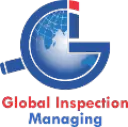Phthalates are commonly used chemicals in many consumer products, but they pose potential health risks, especially with long-term exposure. Understanding what phthalates are, why testing is essential and how regulations impact manufacturers is crucial for ensuring product safety and compliance. Let’s explore what you need to know about phthalates and their role in consumer goods.
What Are Phthalates?
Phthalates (pronounced “thal-ates”) are a group of synthetic chemicals primarily used as plasticisers to make plastics more flexible, durable and soft. They are found in a wide range of consumer and industrial products, from children’s toys to medical devices. However, concerns over their health effects have led to strict regulations limiting their use in various applications.
Common Uses of Phthalates in Consumer Products
Phthalates are widely used in manufacturing due to their ability to improve material flexibility and longevity. Some common applications include:
- Plastics: Found in PVC (polyvinyl chloride) products such as flooring, shower curtains, and vinyl wallpapers.
- Children’s Toys and Baby Products: Used in teething rings, rubber ducks and soft plastic toys to provide a soft texture.
- Personal Care Products: Present in shampoos, lotions, perfumes and nail polishes to stabilise fragrance and improve texture.
- Medical Devices: Found in IV tubing, blood bags and other medical equipment that require flexibility.
- Household Items: Used in adhesives, paints and lubricants to enhance their performance.
Despite their widespread use, research has linked some phthalates to potential health concerns, prompting the need for strict testing and regulation.
The Importance of Phthalate Testing
Ensuring Product Safety Through Testing
Phthalate testing is essential to ensure that consumer products meet regulatory safety standards and do not pose a risk to human health. Testing helps manufacturers identify and limit hazardous phthalates in their products, ensuring compliance with industry regulations and building trust with consumers.
Without proper testing, phthalate-contaminated products could enter the market, leading to potential health risks, product recalls and legal penalties. Testing also helps manufacturers maintain brand credibility by demonstrating a commitment to safety and regulatory compliance.
How Phthalate Testing Is Conducted
Testing is performed by accredited third-party laboratories to ensure accurate results and compliance with safety standards. Phthalate testing involves laboratory analysis using specialised techniques to detect and measure phthalate concentrations in products. The most commonly used testing methods include:
- Gas Chromatography-Mass Spectrometry (GC-MS): This method accurately identifies and quantifies phthalates present in a product sample.
- High-Performance Liquid Chromatography (HPLC): Used for liquid-based products, HPLC helps separate and analyse phthalate content.
- Fourier Transform Infrared Spectroscopy (FTIR): A quick screening technique used to detect phthalates in plastics and other materials.
Key Products That Require Phthalate Testing
Certain product categories are more susceptible to phthalate contamination and require rigorous testing to meet safety standards. These include:
- Children’s Products: Toys, pacifiers, baby bottles and teething rings must be free from restricted phthalates to protect infants and young children.
- Medical Devices: Products like IV bags, tubing and catheters must comply with safety limits to prevent harmful exposure in healthcare settings.
- Food Packaging: Some plastic food containers and wraps require testing to ensure phthalates do not leach into food.
- Personal Care Items: Cosmetics, lotions and perfumes need testing to confirm they do not contain harmful levels of phthalates.
Phthalate Regulations and Compliance
Global Regulations on Phthalates
Due to health concerns, governments worldwide have implemented strict phthalate regulations. Key regulatory bodies include:
- U.S. Consumer Product Safety Commission (CPSC): Under the Consumer Product Safety Improvement Act (CPSIA), six phthalates are restricted in children’s toys and childcare articles.
- European Union (EU) REACH Regulation: Bans or limits certain phthalates in plastics used in consumer products.
- China’s GB Standards: Sets phthalate limits for children’s products and food contact materials.
- California Proposition 65: Requires businesses to label products containing phthalates that may pose health risks.
The Role of Phthalate Regulations in Product Safety
Phthalate regulations play a critical role in protecting consumers from harmful chemical exposure. By setting legal limits on phthalate content, these laws help prevent potential health issues and ensure that manufacturers follow safety standards. Compliance with regulations also minimises the risk of product recalls and legal repercussions.
Tips for Manufacturers to Stay Compliant
To avoid non-compliance issues, manufacturers should:
- Source Safe Materials: Work with reputable suppliers that provide phthalate-free materials.
- Conduct Regular Testing: Perform third-party testing to verify compliance before distributing products.
- Stay Updated on Regulations: Monitor global regulatory changes to ensure continued compliance.
- Implement Quality Control Measures: Establish internal quality checks to detect and prevent phthalate contamination.
Health Risks and Phthalate Exposure
How Phthalates Enter the Human Body
Phthalates can enter the human body through various exposure routes, including:
- Inhalation: Breathing in airborne phthalates from household dust, vinyl flooring, or personal care products.
- Ingestion: Consuming food or beverages contaminated with phthalates from packaging materials.
- Skin Absorption: Absorbing phthalates through lotions, shampoos, or other cosmetic products.
Because phthalates do not chemically bind to plastics, they can easily leach out over time, increasing exposure risks.
Health Effects of Long-Term Phthalate Exposure
Prolonged exposure to certain phthalates has been linked to various health concerns, including:
- Hormonal Disruptions: Phthalates can interfere with endocrine function, affecting reproductive health and hormone levels.
- Developmental Issues: Studies suggest that prenatal exposure to phthalates may impact child development and cognitive function.
- Respiratory Problems: Some phthalates have been associated with asthma and other respiratory issues, particularly in children.
- Increased Risk of Chronic Diseases: Research has linked phthalate exposure to obesity, diabetes and certain cancers.
Phthalates are widely used in consumer products, but growing concerns over their health effects have led to strict regulations and increased phthalate testing requirements. Manufacturers must prioritise compliance through regular testing and quality control measures to ensure consumer safety. By staying informed about regulations and adopting phthalate-free alternatives, businesses can protect both their customers and their brand reputation.
If you’re a manufacturer, make phthalate testing a priority to maintain compliance and contribute to a healthier, safer marketplace. Contact us today for support.
